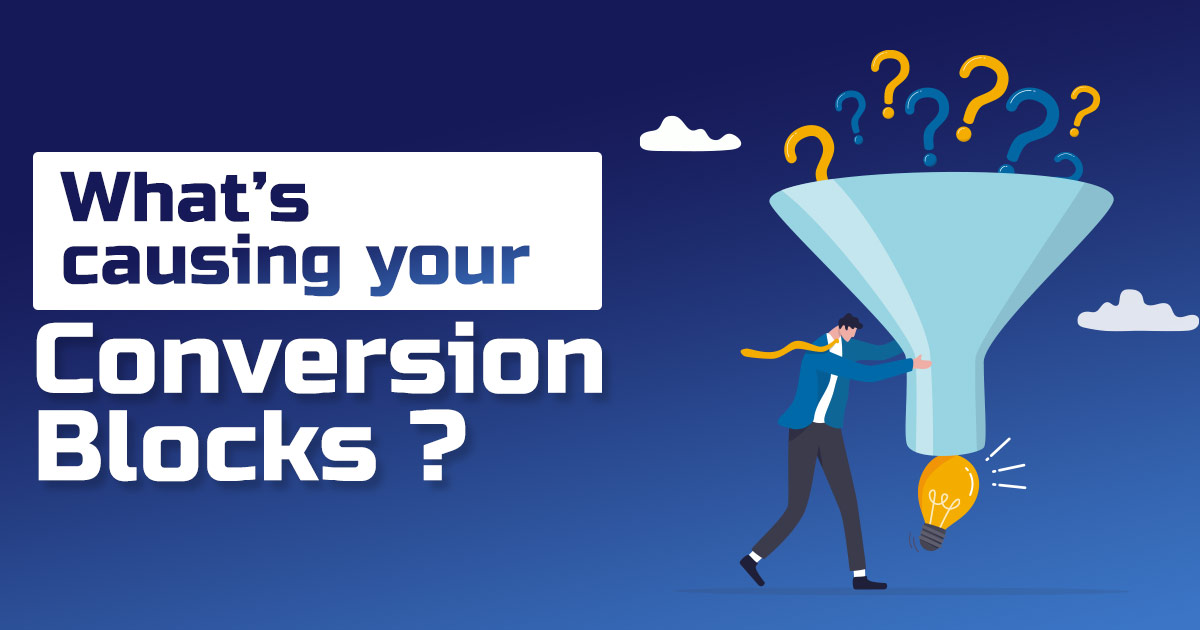
Have you been running ads for long, but people are landing on your website, wander a bit, then leave? I’ve been there, and I know how frustrating it is!
I’ve even had some sleepless nights wondering what the issue was with my media buying campaigns? But, my questions were all going in the wrong direction.
Lucky for you, I am here today to explain how to identify and fix all problems lying in your conversion funnel, and witness those sessions turn into gold streams.
What is a Conversion Funnel?

Whether you are a busy lady or a chef who spends a lot of time in the kitchen, you certainly know what a funnel is.
Yes, they are those inverted cones that we use to avoid spilling our juice outside of a bottle. Using funnels helps you maintain as much as possible of your liquid without spilling any outside of your container.
But, what happens if your funnel is broken? What if your funnel is leaking more liquid than the amount that is supposed to go in your bottle? Such a waste, don’t you think?
Conversion funnels are exactly the same, but they are not physical.
A Conversion Funnel is an infographic visualization of the steps your customers have to pass in order to complete a conversion.
Let’s take an example to describe how it works.
Imagine yourself managing a cosmetics ecommerce store and your main objective is to generate as many purchases as possible through your website.
You would certainly be running some advertising campaigns on a set of digital platforms (social media channels, ad networks, and search engines). Given that you are such a clever Digital Marketer, you would be generating a lot of traffic to your website, let’s say 100,000 users per month.
The number of users who would proceed to check some of your product pages would form a percentage of that original traffic, but will never be the same. We’ll say you got 60,000 users to check your product pages, which is quite a success.
Following the same sequence, Users who added products to their carts amounted to 10,000 of which 3000 proceeded to checkout and 1,500 completed their purchase.
Could you notice in the above example how the number keeps dropping from one step to the next one? Try and place that into a bar chart and you would notice that with each consecutive step, the bars will get shorter leading to a funnel-like infograph.
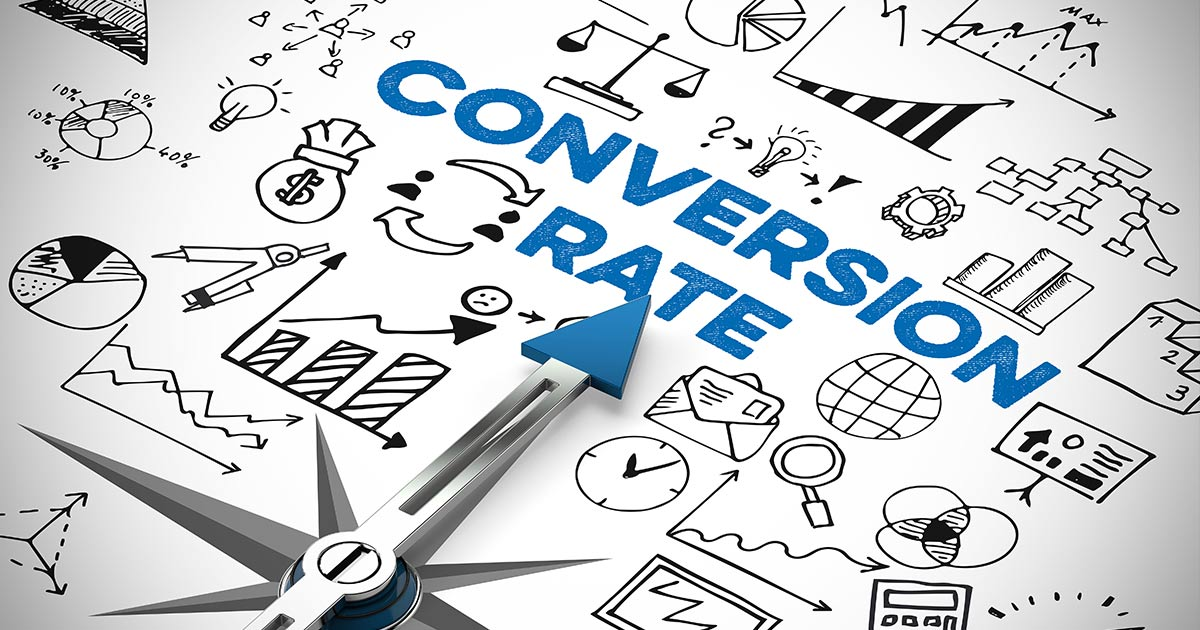
In the above example, the number of users who went into the purchase process was a total of 100,000 of which 1,500 only completed the journey. This percentage is called Conversion Rate. And the process of identifying conversion funnel leaks and fixing them is aimed at maximizing your conversion rate.
Conversion Rate Optimization is the practice mostly concerned with Conversion funnel optimization for simplifying the user experience on your website until users turn into paying customers.
Traditional Marketing Funnel Steps
The traditional funnel used to consist of 3 major steps representing the customer’s journey from being completely unaware of a brand to finally choosing it for fulfilling his need.
Understanding those steps is essential for guiding your sales and marketing funnel and efforts. Directing the right message is highly dependent on the step in which the receptor lies.
For example, you can’t push a user who doesn’t have any clue about your product to purchase it with a discount. On the other hand, targeting a client who is considering making a purchase with an introductory message is a lost opportunity.
Awareness
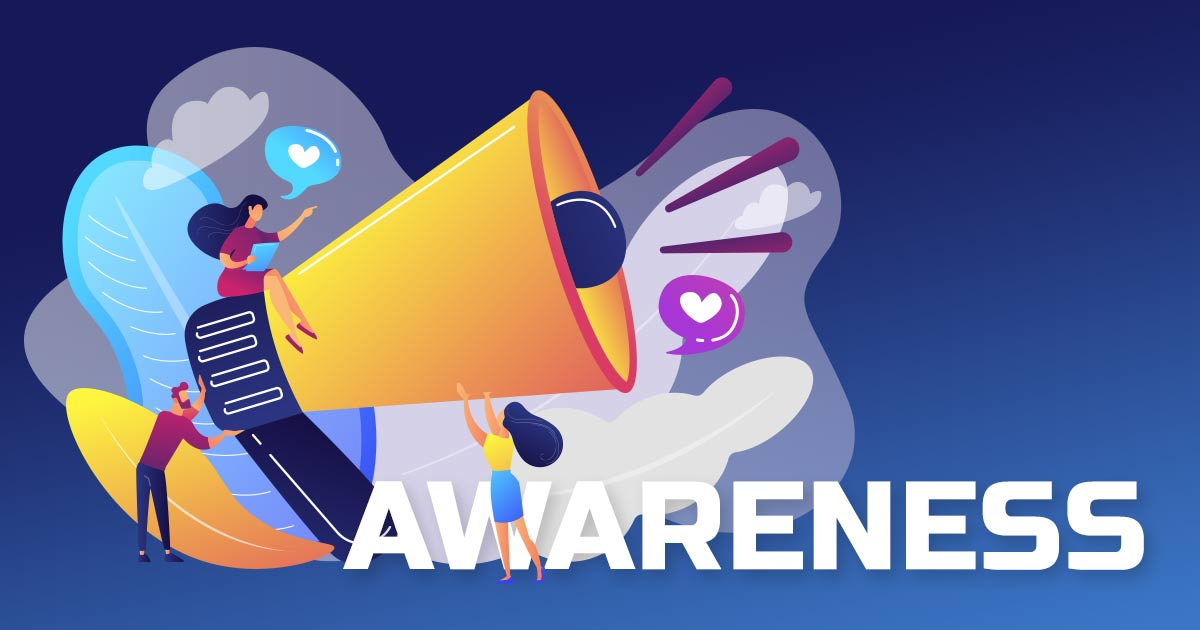
The awareness stage is the first step of the buyer’s journey and it inflicts that a user is just aware of the brand’s name. At this stage, the user doesn’t have any information that can support placing your product or service in comparison with others.
When marketers are planning to go with market penetration, or a market expansion marketing strategy, the right approach would be to increase a market’s share of awareness.
That can be achieved through the marketing team running awareness campaigns on social media platforms or display networks in order to push more prospective customers through the funnel.
Consideration

The consideration phase takes place when a customer has learned a lot about your product/service and may consider it while evaluating alternatives for satisfying his/her need.
It’s given the name “consideration phase” as users at this stage usually form a group of products and place them into a consideration set specific to their needs.
A marketer’s objective at this stage is to try and place his brand among users’ consideration sets.
Considering a product/service doesn’t necessarily mean that the user is going to buy it. Securing yourself a position among his set of potential answers for a specific need is a good step though.
Conversion
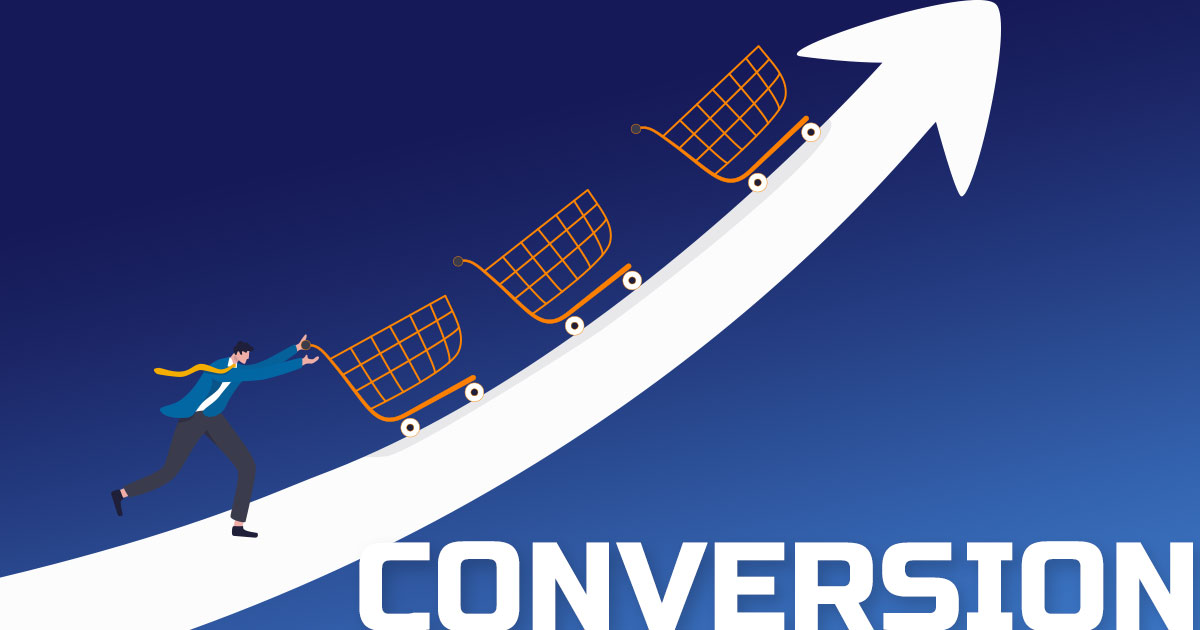
The final step in any sales funnel and the core objective of any sales process.
Conversions are not only sales or purchases; conversions can be any action taken by a customer that adds value to a business.
Examples of conversion include:
Newsletter Subscriptions
New account registers
50% scroll depth on a blog post
Submitting a lead generation form
In short, conversion is any step in which the potential buyers or customers turn into actual clients of the business. The goal of any business is to get more conversions and in turn, grow its annual revenues.
There are two options to increase the number of conversions for a given business, the first of which would be to increase the number of potential clients going through the funnel, and the second would be to enhance the funnel performance.
AIDA Conversion Funnel
AIDA is a similar but somehow modernized system for the marketing funnel that breaks the journey down into 4 steps.
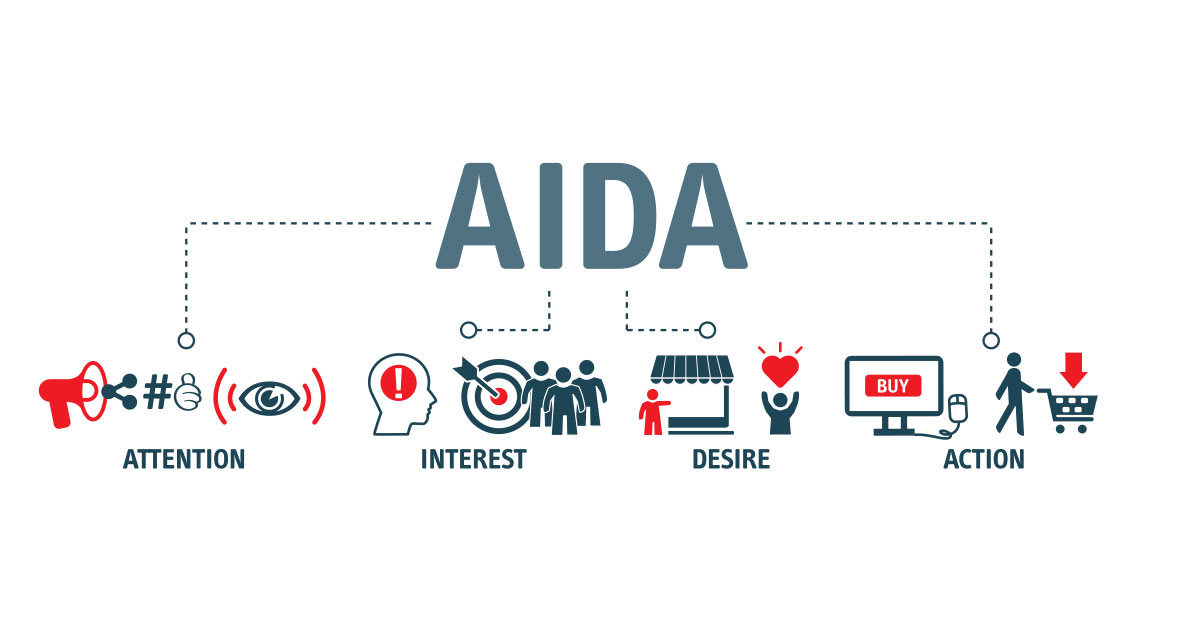
Attention
Attention or Awareness is still the same in the above scenario, where a user just gets familiar with the brand name and its core offering without going into more details.
For marketers to be able to calculate their share of brand awareness, they need to measure the percentage of prospective customers in a given audience who can recall or remember the brand’s name.
Interest
You can be interested in a broad range or a number of items, yet you don’t necessarily have to be wanting to buy them. For example, I am interested in BMW and am interested in Video games, yet I am not willing or have the drive to purchase any of them.
When the science of the Marketing funnel evolved, consideration was broken into two steps that are Interest and Desire.
Interest is when a user likes a brand and wants to get more content from it, but the type of content he is expecting isn’t of the decision-making type.
If we’re speaking about video games, you might be interested to watch a gameplay video or a live stream. But you are not interested in knowing the specs of a gaming PC or a PlayStation.
Desire
Clear from its name, desire is that point when a user is willing to learn more about the price, location, or installment plans for a certain purchase. The user at this stage is starting to evaluate alternatives for making a final purchase.
This is the leverage point where the need is transformed into a want. A user has his need shaped into a want by options of the product/ service and its alternatives.
Action
Now the time has come for you to yield the result of your marketing efforts.
Through the Action phase, a user is willing to complete a conversion and is just going through the final comparison.
In the action phase, a marketer’s role is to introduce the customer with attractive hooks that can capture his buying power and direct it toward his brand.
But, different customers are attracted by different hooks, so you need to study your audience carefully first.
The difference between a Conversion and a Marketing funnel
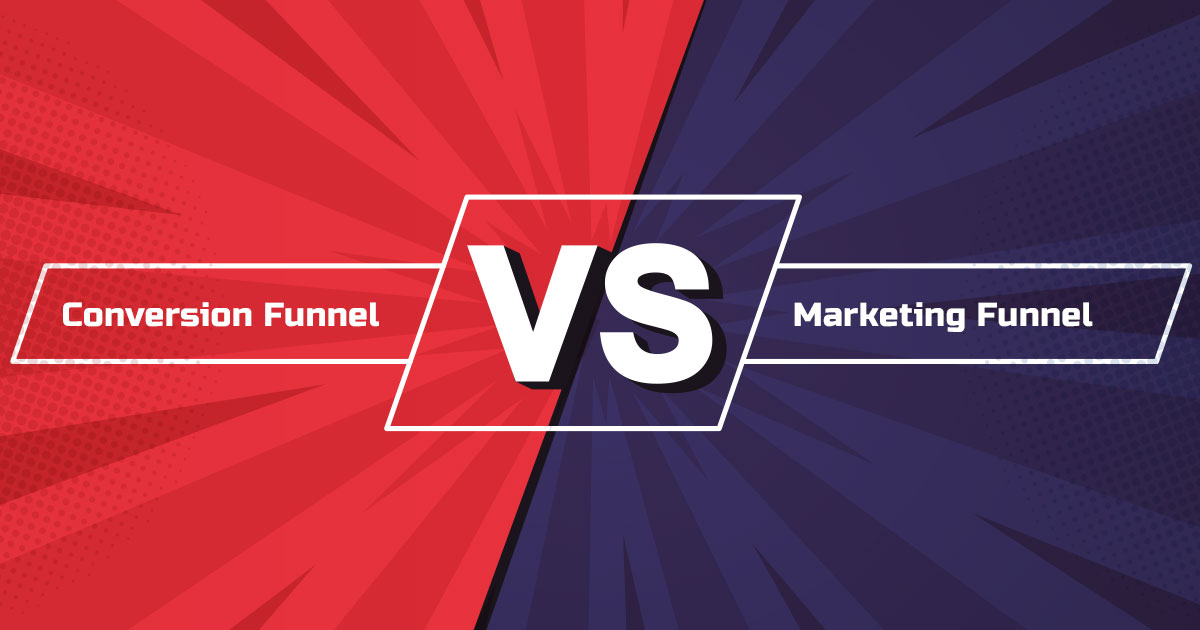
I haven’t personally read a lot of articles telling the difference between the two funnel systems.
However, it is easy to identify the difference. Any funnel is composed of a series of steps that accommodate a smaller number of users with each consecutive step.
Marketing Funnel
This one incorporates that series of steps that the user passes through psychologically until he reaches the point where he is ready to take an action.
The two above scenarios are the major representation of the marketing funnel. They both measure customer’s way
Conversion Funnel
On the other hand, a conversion funnel incorporates the series of technical steps that a user goes through in order to complete a conversion.
Conversion funnels are different from one conversion type to the other. The technical process that a user has to path through in order to buy a product is different from that he takes when he wants to subscribe to a newsletter.
A conversion funnel for an e-commerce product shop usually consists of the following steps:
Session Start
Product Page View
Add To Cart
Cart Review
Initiate Checkout
Purchase
While a typical blog conversion funnel consists of the below:
Session Start
Blog Page View
2-5 minutes time view
Complete Subscription
Both are considered conversion funnels, however, both have different structures.
Conversion Funnel Visualization Report
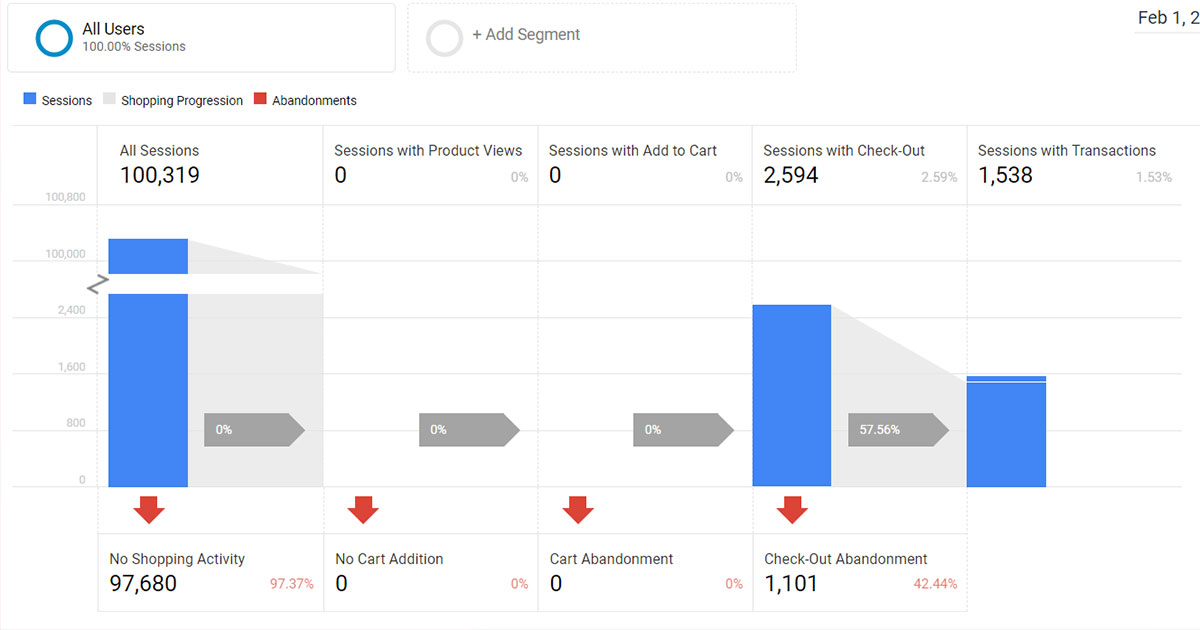
Creating a Conversion Funnel Visualization Report is considered to be the first step in the Conversion Rate Optimization process.
By creating a conversion funnel visualization report you can inspect some figures and identify whether all your conversion steps are working properly or not.
A conversion funnel visualization in Google Analytics, for example, is a bar chart of all the steps leading to a conversion and each bar should be smaller than the one to its right.
The drop-off ratio of each step is represented by a triangle connecting the top section of each bar.
A drop-off ratio tells you how many users abandoned your ecommerce website before completing the next step in a sales funnel.
Funnel visualization can tell you a lot about the behavior of each target audience. If you are targeting different age ranges or different countries, each target audience may respond differently to your conversion funnel.
And hence in some advanced applications, you can create a separate funnel representation according to historical data for each unique segment.
Identify Problems in your Conversion Funnel
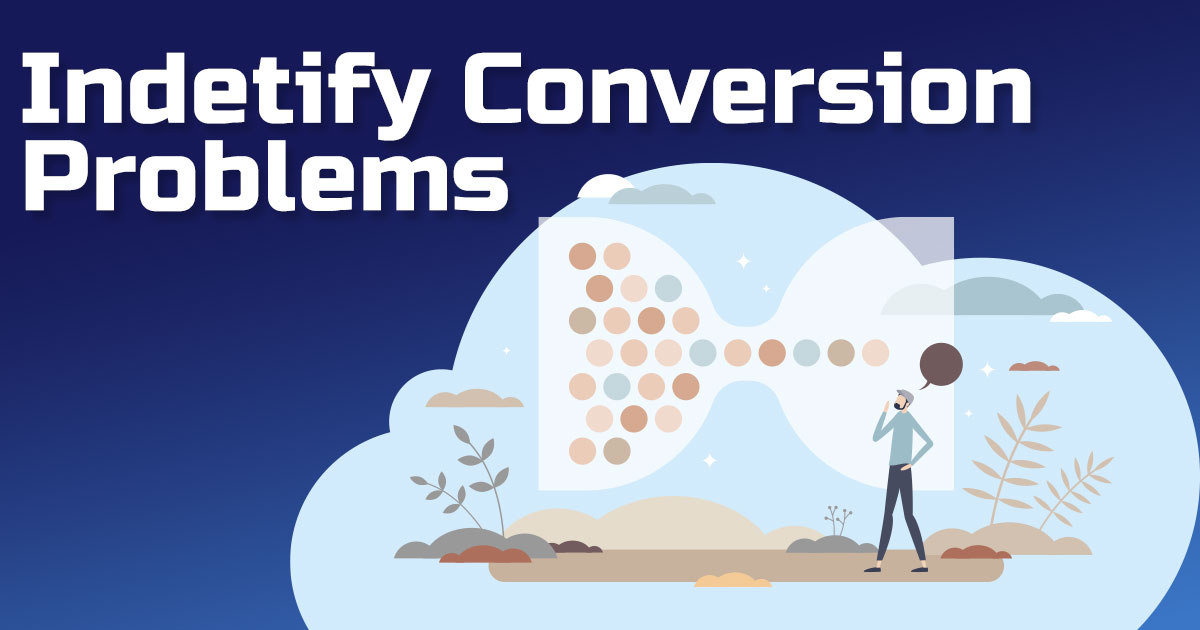
If you are running an online store and generating enough traffic each month, then consider the development of your conversion rates should be your next objective.
Identifying all the pain points that your potential customer meets along his journey and fixing them, can lead to a 100% increase in your number of conversions.
Say you sell a product that has a price point of 100$ and your monthly traffic is around 100,000 users. If your conversion rate is about 1% that means you make 1,000 sales each month.
Now, if you work on developing an effective conversion funnel for your website visitors, that percentage can go up to 2 or 3%. That means doubling or even tripling your online sales.
There are two types of analysis that you must carry out in order to identify all the bottlenecks affecting your conversion rate.
Quantitative Analysis
Quantitative analysis is aimed to tell you the number of users who carry a specific action or complete a specific step along the customer journey on your ecommerce site.
In fact, funnel visualization is the major type of quantitative analysis we can consider through our conversion optimization process.
Checking your Google Analytics Ecommerce, Shopping Behavior report will tell you how many users make it to the next step and how many drop-offs.
You can also check the goal flow report in Google Analytics, but you must set the goals and their sequence in the Google Analytics account settings beforehand.
High drop-off rates at any of the different stages of your funnel shall raise a flag that there is something wrong with that specific step.
That’s when we should move to the next step of qualitative analysis to identify the nature of the problem.
Qualitative Analysis
When you realize that you have been losing customers at a certain step in your conversion funnel, it is time to apply some qualitative analysis to figure out the specific details of the problem.
The golden key to understanding how your customers behave and why they are facing difficulty is using a qualitative analysis tool. Heatmaps, session recordings, and survey management tools are your go-to solution.
Heatmaps help you understand which parts of any given page are getting clicks and which parts are not. That way you can determine which sections of your website are more attractive to your audience.
Moreover, you can use scroll depth maps in order to identify how far your users go on your website pages. This report can show you which parts of your website are getting viewed and which parts are beyond the viewable area of your users.
I have been taught since day one in marketing research that observation is the best type of qualitative analysis. Session Recordings are usually the type of data you need to manage your website observation research technique.
Imagine yourself sitting beside any of your ecommerce site visitors and witnessing their interaction with your own site content. I mean, isn’t that the dream.
You can do that with session recordings. You can watch complete sessions carried out by your site visitors and highlight their main conversion obstacles.
Maybe the dilemma with your conversion rate isn’t a problem on your website, but something missing. What if your users are looking for a specific promotion on your site, but can’t find it.
That is when surveys come into action, with a survey you can ask your visitors anything you want, from the type of offers they expect to see, all the way to a difficult word that they might not understand and hence become hesitant at the most critical step.
Fix Funnel leaks using hypotheses and experiments
Now that you have used the above method to figure out where your problem lies and what its nature is, there is only one thing left to do; Fix It!
By breaking down your funnel steps into three sections, we can have a better approach to offering more tailored solutions for each type of problem.
Identify top of the Funnel Problems
I’ve had a lot of people telling me that they are using all the possible communication channels from social media, PPC ads, video type ads, and the impressions are flooding but not leading to any clicks.
I’ve had other instants with people telling me about how their traffic lands and as soon as they touch the landing page, they bounce immediately.
Those types of issues are called top-of-funnel problems or (TOFU Problems)
Fixing Top of the Funnel Problems
Addressing funnel problems and fixing them requires you to place yourself in your audience’s shoes.
How do you interact with your Facebook or Instagram news feed? The answer to this question would most probably be that you keep skipping until you find an attractive visual that grabs your attention and then you might be interested to read the caption.
Moreover, if you are met with a video, you just let it play for a couple of seconds to determine what it is about, if you got hooked, then you might proceed with it till the end.
If you are facing a problem with ad clicks and can’t push any traffic as a result, you might consider changing your ad visual. A good strategy I always use is to create 3 different options for any traffic or conversion campaign I am running and let the first 3 to 4 days work as a test phase.
Then when I start to find the best-performing ones, I proceed to stop the rest. With videos, you might consider placing your most attractive shots or an ad message in the first 3 seconds.
Some other Marketers believe that placing their logo at the beginning yields the highest benefits. But, on the other hand, when users are met with a logo at first, they get that the video is an ad and just skip it right away.
Also, don’t forget that you will need to add a call to action message at the beginning of your video or at the top of your visual, that tells your audience what’s expected from them. Mostly, users won’t tire themselves looking for a way to reach your site if you didn’t ask and offer them an easy way to do it
Issues with bounce rates require a totally different solution. A high bounce rate tells you that the first page they meet when they land on your website is irrelevant to your users.
Maybe they saw an offer in your ad, and came looking for it, but couldn’t find it on the page.
Fixing a high bounce rate can require you to test multiple landing pages until you decide on a page schema that works. Most of all, try to keep your design clean and optimized for all devices. Include a clear call to action at the top of your page and color it in an appealing color.
Make sure you optimize your page’s speed as it can make all the difference. After all, users usually decide whether they will stay or leave in the first 5 seconds. Can you imagine, if your page took all that time in loading or even half that time; What a waste!
Identify mid of the funnel problems
Mid-funnel issues usually take place when a high drop-off ratio is noticed on a product page or after adding some items to the shopping cart but never reaching the checkout page.
When there is another problem that you can’t quite understand the nature of, you can always refer back to session recordings of sessions where the product page is the exit page.
You can also create a survey asking people about any difficulties they are facing with your product page.
Fixing Mid of the Funnel Problems
When a user views a product page, he is expecting to see a lot of information regarding the product. You should give him the feeling of holding the product between his hands.
Product page details should include product images and a long detailed description, highlighting the product materials, dimensions, and precautions. You can also add the number of reviews it received and each product’s score according to those reviews.
People abandoning their carts before proceeding to checkout don’t have a precise reason, so you need to figure this out with heatmaps, session recordings, and surveys. Each unique problem can have a set of scenarios to solve. Not sure how? communicate your case with me in the comments or fill out a form and I’ll think it out with you.
Identify Bottom of the Funnel Problems
Losing customers at the end of their conversion journey can be the most frustrating thing you’ll ever meet as a marketer. Running an online business is all about leading your traffic to that lovely thank you page at the end of your conversion funnel.
From then you should be only focusing on transforming those users into repeat customers.
But, can you imagine if a salesman at a physical store goes all the way to convince the user of a product? The customer finally grabs the item and proceeds to the cashier and then leaves the product at the counter and goes out! How would that make you feel?
It is the same way with ecommerce businesses. Usually, when a customer abandons a checkout it means one of the following scenarios.
1 The user was just calculating the total value of a set of products he is willing to buy later.
2 The user has met difficulty with entering his data or finds it pretty overwhelming
3 He can’t find a suitable payment option
4 There is some technical problem with your checkout form
5 The user is trying to use a promo code, but it is not working, maybe expired
6 He finds your shipping costs quite expensive
7 He can’t wait that long for the shipping to reach him
8 Average order value for your transactions is quite low
Fixing end-of-funnel problems will help you boost your conversion rates and transform potential customers into measurable results
Fixing Bottom of the Funnel Problems
1 If the user was just calculating the package for himself and was planning to complete his conversion at a later time, then the proper way to capture him is through retargeting campaigns.
Retargeting audiences who have abandoned their checkout will keep reminding them of what they once wanted. If you added an extra discount for bookings through your retargeting ads, you will see impressive results.
2 Long forms with lots of required sections in the checkout form can be quite frustrating to your audience. Therefore, I recommend keeping your requested data short and marking the necessary data only as required, any other fields can be left optional.
3 Take it as a common rule, the more payment options you offer the more efficient your BOFU will be
4 Technical problems will require you to get back to your developer. However, in most cases, your developer will require additional information. Hence, I would recommend creating a quick feedback form where you ask the user for his email or a screenshot of the problem.
5 Make sure your promo codes are announced within time frames. If a user keeps a promo code for a while and comes back to try and use it at a later date, it might have already expired. When the user tries it and finds it doesn’t work, he will just leave and try to find a similar offer somewhere else.
6 & 7 Did you know that most dropshipping businesses depend on Free Shipping as their main attraction point? Shipping matters, so try your best to keep the shipping as low as possible and as fast as possible, it can make quite a difference.
8 A low average order value means that your customers are checking out with only one or two low-value products. When this happens you can either create packages with a count of 3 or 4 products that are usually bought together and highlight it as a recommendation when a user adds a single product to his cart.
You can also add free shipping for orders that are above a minimum cart value.




